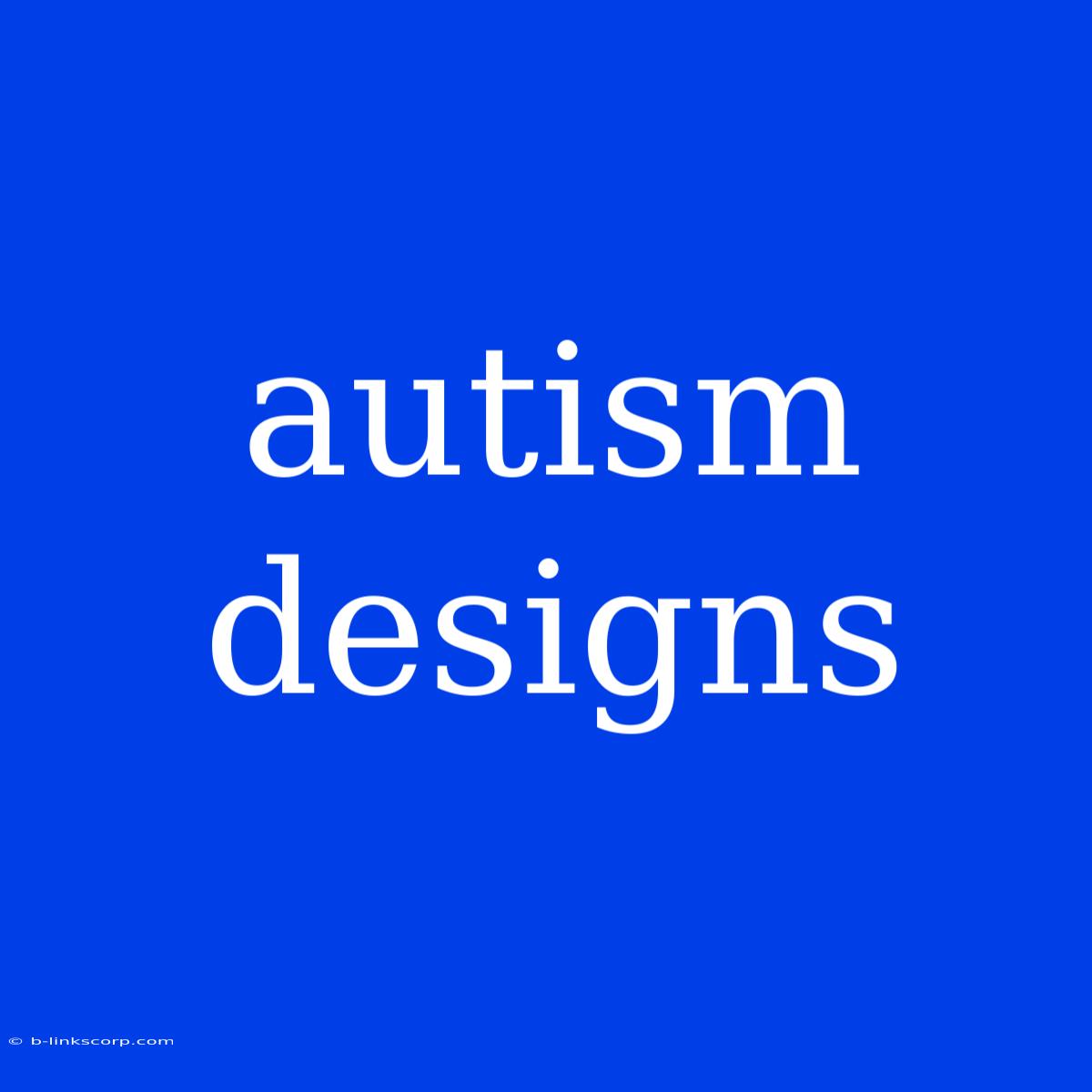Autism Designs: Creating Inclusive and Sensory-Friendly Spaces
Autism spectrum disorder (ASD) is a neurodevelopmental condition that affects communication, social interaction, and behavior. Individuals with autism often experience sensory sensitivities, which can be overwhelming in environments that are not designed with their needs in mind. Autism designs are a growing field that focuses on creating spaces and products that are inclusive, sensory-friendly, and supportive for individuals with autism.
Understanding Sensory Sensitivities
People with autism may experience heightened or diminished senses, leading to overstimulation or under-stimulation. They might be sensitive to loud noises, bright lights, strong smells, or certain textures. Sensory sensitivities can manifest as anxiety, frustration, and even meltdowns.
Principles of Autism Designs
1. Reducing Sensory Overload:
- Minimize visual clutter: Use calming colors, simple patterns, and clear lines of sight.
- Control lighting: Provide dimmable lighting options and avoid harsh fluorescent bulbs.
- Manage acoustics: Use sound-absorbing materials, reduce noise levels, and create quiet zones.
- Reduce distractions: Minimize unnecessary visual and auditory stimuli, such as flashing lights or loud music.
2. Providing Sensory Stimulation:
- Offer sensory tools: Provide fidget toys, weighted blankets, or sensory-friendly furniture.
- Create sensory spaces: Design dedicated areas with sensory stimulation, such as a calming corner with soft lighting and calming sounds.
- Integrate sensory elements: Incorporate sensory features into furniture, walls, or floor coverings, such as textured surfaces, soft materials, or visual stimulation.
3. Fostering Communication and Social Interaction:
- Use clear and concise communication: Employ visual aids, simple language, and consistent routines.
- Create social spaces: Design welcoming and comfortable spaces for social interaction.
- Promote independence: Design environments that encourage self-sufficiency and autonomy.
Examples of Autism Designs in Different Settings
Homes:
- Calming bedrooms: Soft lighting, sound-absorbing curtains, and calming color palettes.
- Sensory-friendly play areas: Designated areas with sensory toys, textured surfaces, and calming activities.
- Organized and predictable spaces: Clearly defined spaces for different activities and consistent routines.
Schools:
- Sensory-friendly classrooms: Reduced visual and auditory distractions, calming colors, and designated sensory spaces.
- Inclusive playgrounds: Sensory paths, quiet zones, and play equipment designed for different abilities.
- Support for students with autism: Trained staff, individualized learning plans, and a focus on communication and social interaction.
Public spaces:
- Sensory-friendly restaurants: Reduced noise levels, dimmable lighting, and menus with clear pictures and descriptions.
- Accessible restrooms: Sensory-friendly features such as calming lighting, sound-absorbing materials, and easily accessible toilet facilities.
- Inclusive parks: Sensory gardens, calming pathways, and accessible equipment for all.
Benefits of Autism Designs
- Reduced stress and anxiety: Creating a more comfortable and predictable environment can reduce sensory overload and stress for individuals with autism.
- Improved communication and social interaction: By providing a supportive and inclusive environment, autism designs can foster communication and social skills.
- Increased independence and self-confidence: Environments designed with autism in mind can encourage autonomy and promote self-confidence.
- Enhanced learning and engagement: A sensory-friendly and inclusive learning environment can help individuals with autism to thrive and reach their full potential.
Conclusion
Autism designs are essential for creating inclusive and supportive spaces for individuals with autism. By incorporating sensory-friendly features, reducing distractions, and promoting communication, we can create environments that allow people with autism to feel comfortable, confident, and engaged. As we continue to learn and understand the needs of individuals with autism, autism designs will continue to evolve and shape a more accessible and inclusive world for all.

